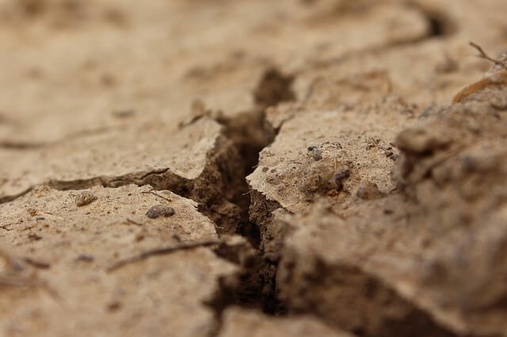The properties of clay are no longer to be demonstrated, whether it is used for curative purposes, in cosmetics or in the home. This earth has been used since ancient times to treat ailments and was used in the mummification process, due to its antiseptic and purifying properties. Today, it is believed to play a significant role in the appearance of life on Earth (and not only in religious texts!), because of its capacity to accumulate and transfer energy.
Its properties are multiple and have been demonstrated on many occasions
It is absorbing, regenerating, remineralizing, purifying, healing, antiseptic, detoxifying, analgesic, anti-congestive, anti-inflammatory, softening ... In short, a real treasure of nature.
Used internally, clay stimulates tired organisms by remineralizing them thanks to its high content of trace elements and minerals. The natural defenses are strengthened and it promotes cell regeneration. Like a sponge, clay absorbs toxins stored on the digestive mucosa and cleanses the intestine.
Externally, for beauty care, it can be used on the skin as well as on the hair, in toothpaste or in the bath to soften the epidermis, but not only! In cataplasm, its effects are grandiose and can help in many cases: the clay resorbs hematomas, sprains, strains and edemas, soothes sunburns, irritations and burns, cleanses and drains suppurations and wounds... but that's not all!

Indeed, clay also relieves, in an impressive way, the muscular pains... and articular!
Ideal, therefore, in arthritic pathologies. For this type of inconvenience, it is preferable to choose green (montmorillonite or illite, preferably) and good quality. Clay being very absorbent, the place where it is harvested is essential for maximum efficiency. In order to relieve arthritic pain, clay should be applied in cold poultices.
How to apply clay in poultices.
To do this, you need to mix the clay in a container with enough water to form a thick enough slurry. Mix with a non-metallic utensil (metal causes the clay to lose its properties). It is then enough to apply the mixture locally in a layer of approximately one centimeter, during two to four hours, even all night, and to bandage the whole so that the cataplasm remains in place.
In principle, as soon as the person concerned feels discomfort due to the plaster, whether it is cool or warm, it should be removed. If the cold is not well tolerated or if it is a sensitive area, the mixed water can be lukewarm. It is also possible to add two drops of anti-inflammatory and analgesic essential oils (Gaultheria, Lemon Eucalyptus...) to this mixture to benefit, in addition, from their benefits.
This poultice is to be made regularly: once a day, in case of chronic arthritis, and two to three times per 24 hours, in case of acute crisis. The more regular and rigorous the application, the more beneficial and effective the treatment will be.
Be careful not to recover a clay that has already been used: in fact, its properties will be completely diminished, if not null, since it will have pumped out the toxic elements.



